-
 Bitcoin
Bitcoin $113900
-1.39% -
 Ethereum
Ethereum $3517
-4.15% -
 XRP
XRP $3.009
1.59% -
 Tether USDt
Tether USDt $0.9997
-0.04% -
 BNB
BNB $766.8
-1.41% -
 Solana
Solana $164.6
-2.38% -
 USDC
USDC $0.9998
-0.02% -
 TRON
TRON $0.3277
0.65% -
 Dogecoin
Dogecoin $0.2023
-1.67% -
 Cardano
Cardano $0.7246
0.05% -
 Hyperliquid
Hyperliquid $38.27
-4.77% -
 Sui
Sui $3.528
-0.52% -
 Stellar
Stellar $0.3890
-0.73% -
 Chainlink
Chainlink $16.16
-2.69% -
 Bitcoin Cash
Bitcoin Cash $539.9
-4.38% -
 Hedera
Hedera $0.2425
-2.00% -
 Avalanche
Avalanche $21.71
-0.97% -
 Toncoin
Toncoin $3.662
5.73% -
 Ethena USDe
Ethena USDe $1.000
-0.02% -
 UNUS SED LEO
UNUS SED LEO $8.964
0.35% -
 Litecoin
Litecoin $107.7
2.33% -
 Shiba Inu
Shiba Inu $0.00001223
-0.40% -
 Polkadot
Polkadot $3.617
-0.97% -
 Uniswap
Uniswap $9.052
-2.49% -
 Monero
Monero $295.1
-3.79% -
 Dai
Dai $0.9999
0.00% -
 Bitget Token
Bitget Token $4.315
-1.85% -
 Pepe
Pepe $0.00001060
0.11% -
 Cronos
Cronos $0.1342
-2.72% -
 Aave
Aave $256.0
-0.87%
How to check the status of a transaction on Etherscan from MetaMask?
After sending a transaction via MetaMask, use the Tx Hash to track its status on Etherscan, where you can verify if it’s pending, successful, or failed.
Aug 02, 2025 at 07:28 am
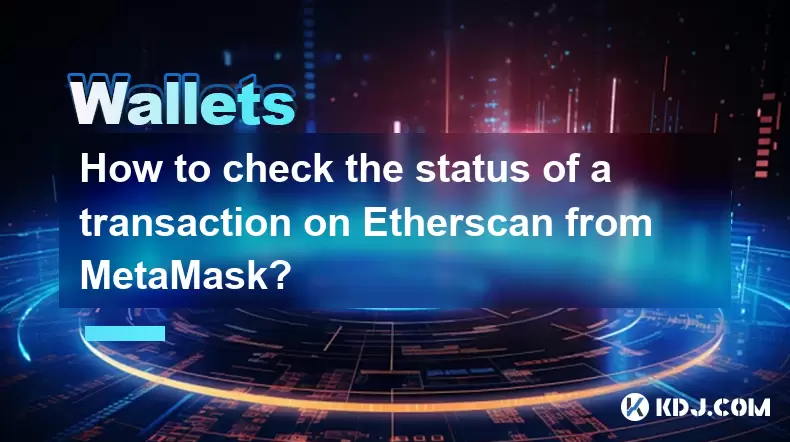
Understanding the Connection Between MetaMask and Etherscan
When you execute a transaction using MetaMask, it interacts directly with the Ethereum blockchain. Every transaction is assigned a unique identifier known as a transaction hash (Tx Hash). This hash acts as a digital fingerprint, allowing users to track the progress and status of their transaction across the Ethereum network. Etherscan serves as a blockchain explorer, providing public access to all on-chain data, including transaction details, gas fees, confirmations, and final status. By leveraging the transaction hash generated by MetaMask, you can use Etherscan to verify whether your transaction has been successfully mined, is pending, or has failed.
Locating the Transaction Hash in MetaMask
To begin tracking your transaction, you must first retrieve the transaction hash from MetaMask. Open the MetaMask wallet extension in your browser and navigate to the Activity tab. Here, you’ll see a list of your recent transactions. Identify the transaction you wish to check. Click on it to open the detailed view. In this view, you will find a section labeled "Transaction Hash" or "Tx hash". This is a long string starting with 0x, typically consisting of 66 characters. You can click the copy icon next to it to copy the hash to your clipboard. This hash is essential for searching on Etherscan.
Navigating to Etherscan and Searching the Transaction
Open a new browser tab and go to https://etherscan.io. On the homepage, locate the search bar at the top of the page. Paste the transaction hash you copied from MetaMask into this search bar. Press Enter or click the magnifying glass icon to initiate the search. Etherscan will process the input and, if the hash is valid and associated with a real transaction, redirect you to the transaction details page. This page contains comprehensive information about the transaction’s journey on the Ethereum blockchain.
Interpreting Transaction Status on Etherscan
Once on the transaction details page, several key pieces of information will help you understand the current status:
- The Status field will display one of the following: "Success", "Pending", or "Fail".
- If the status is "Pending", it means the transaction has not yet been included in a block. It remains in the mempool, waiting for miners or validators to process it.
- A "Success" status indicates the transaction has been confirmed and executed as intended. This includes successful token transfers, contract interactions, or ETH transfers.
- A "Fail" status means the transaction was processed but reverted due to an error, such as insufficient gas, a smart contract rejection, or slippage in a swap.
Additionally, check the "Block" number and "Confirmations" count. A higher number of confirmations increases confidence in the transaction’s finality. Most services consider 12 confirmations sufficient for high-value transactions.
Analyzing Gas and Network Details
The Gas section on Etherscan provides critical insights into transaction efficiency. You’ll see the Gas Price (in Gwei), Gas Limit, and Actual Gas Used. Compare the gas price you set in MetaMask with the current network average. If your gas price was too low, that could explain why the transaction is stuck in "Pending" status. You can also view the Max Priority Fee and Max Fee Per Gas if the transaction uses the EIP-1559 format. Under the "More Details" dropdown, you can inspect the Nonce, Input Data, and whether the transaction interacted with a smart contract. This data helps diagnose failures, especially when interacting with decentralized applications (dApps).
Handling Pending or Stuck Transactions
If your transaction remains "Pending" for an extended period, you may need to take corrective action. Return to MetaMask and locate the pending transaction. Click on it to reveal the "Speed Up" option if available. This allows you to resubmit the same transaction with a higher gas fee, incentivizing miners to prioritize it. Alternatively, you can use the "Cancel" option, which sends a zero-value transaction with the same nonce but a higher gas fee, effectively replacing the original. Ensure you confirm the new gas settings before submitting. After resubmitting, repeat the process of copying the new transaction hash and checking its status on Etherscan.
Verifying Receipt and Final Outcome
Once the transaction is confirmed, revisit Etherscan and check the "Internal Transactions" and "Token Transfer" tabs if applicable. These sections show any secondary operations triggered by the main transaction, such as ERC-20 token movements or contract calls. If you sent tokens, verify that the "To" address matches your intended recipient and that the correct amount was transferred. You can also use the "View Token Tracker" link to monitor token balances over time. For contract interactions, review the "Input Data" to confirm the function called and parameters used, ensuring the transaction executed as expected.
FAQs
How do I know if my transaction failed due to low gas?
On Etherscan, if the status is "Fail" and the "Gas Used" is close to the "Gas Limit", it often indicates the transaction ran out of gas. Additionally, the "Reason" field may state "Out of gas" or reference a revert in the smart contract due to insufficient resources.
Can I track a transaction without a transaction hash?
No, the transaction hash is required to look up a specific transaction on Etherscan. However, if you know the sending or receiving wallet address, you can search that on Etherscan and browse the transaction history to locate the relevant entry.
What does a "Nonce" mean in transaction details?
The Nonce is a sequential number associated with each transaction from a specific wallet. It starts at 0 and increases by 1 for each transaction. Etherscan displays it to help identify transaction order and prevent replay attacks. If you attempt to send two transactions with the same nonce, only one will be processed.
Why does my transaction show as "Success" but I didn’t receive the tokens?
Even if the transaction is "Success", the token transfer might not reflect in your wallet immediately. Refresh the token balance in MetaMask by clicking "Add Token" and entering the correct contract address. Also, ensure the dApp or exchange credited the correct wallet address.
Disclaimer:info@kdj.com
The information provided is not trading advice. kdj.com does not assume any responsibility for any investments made based on the information provided in this article. Cryptocurrencies are highly volatile and it is highly recommended that you invest with caution after thorough research!
If you believe that the content used on this website infringes your copyright, please contact us immediately (info@kdj.com) and we will delete it promptly.
- Phishing, Wallets, and Stolen Funds: Staying Safe in the Wild West of Crypto
- 2025-08-02 16:30:12
- Rare Coin Alert: Is That 50p in Your Pocket Worth £10,000?
- 2025-08-02 16:30:12
- Arbitrum (ARB) Price Prediction: Oversold Signal or Breakout Imminent?
- 2025-08-02 16:55:36
- Arbitrum (ARB): Navigating Price Dips, PayPal Perks, and the Road Ahead
- 2025-08-02 17:00:12
- CoinDCX, Coinbase, and Cyber Heists: A Crypto Rollercoaster
- 2025-08-02 14:30:12
- Solana, Axiom Exchange, and Revenue: Navigating the Future of DeFi
- 2025-08-02 12:50:12
Related knowledge

What is a watch-only wallet in Trust Wallet?
Aug 02,2025 at 03:36am
Understanding the Concept of a Watch-Only WalletA watch-only wallet in Trust Wallet allows users to monitor a cryptocurrency address without having ac...

How to switch between networks in Trust Wallet?
Aug 02,2025 at 12:36pm
Understanding Network Switching in Trust WalletSwitching between networks in Trust Wallet allows users to manage assets across different blockchains s...
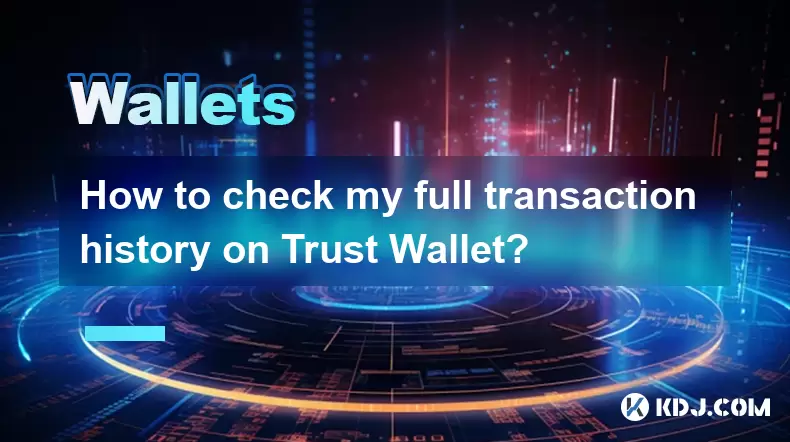
How to check my full transaction history on Trust Wallet?
Aug 02,2025 at 09:24am
Understanding Transaction History in Trust WalletTrust Wallet is a widely used non-custodial cryptocurrency wallet that supports a broad range of bloc...
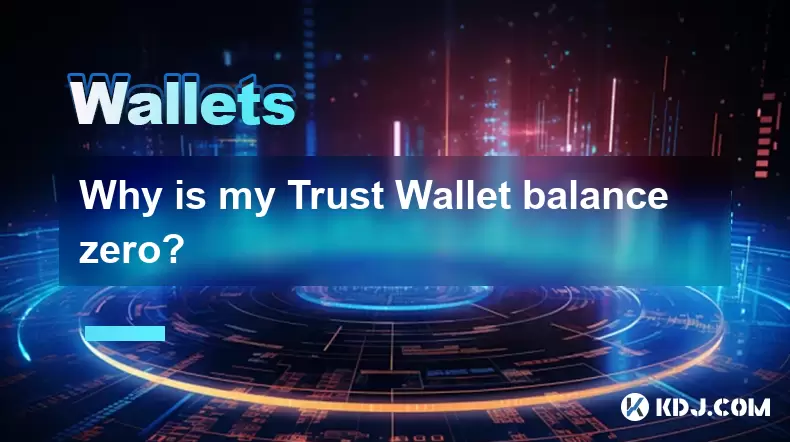
Why is my Trust Wallet balance zero?
Aug 02,2025 at 03:49am
Understanding Trust Wallet Balance Display IssuesIf you're seeing a zero balance in your Trust Wallet despite knowing you've previously received or se...
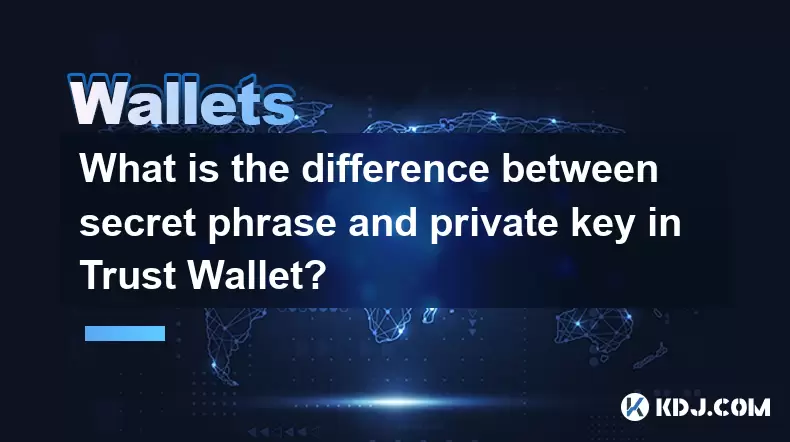
What is the difference between secret phrase and private key in Trust Wallet?
Aug 02,2025 at 09:49am
Understanding the Role of a Secret Phrase in Trust WalletThe secret phrase, also known as a recovery phrase or seed phrase, is a sequence of 12 or 24 ...
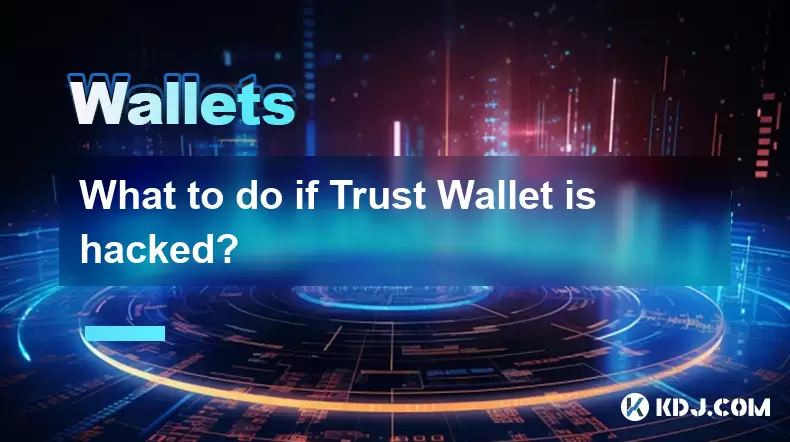
What to do if Trust Wallet is hacked?
Aug 02,2025 at 03:56pm
Immediate Actions to Take If Your Trust Wallet Is CompromisedIf you suspect that your Trust Wallet has been hacked, the first priority is to act swift...

What is a watch-only wallet in Trust Wallet?
Aug 02,2025 at 03:36am
Understanding the Concept of a Watch-Only WalletA watch-only wallet in Trust Wallet allows users to monitor a cryptocurrency address without having ac...

How to switch between networks in Trust Wallet?
Aug 02,2025 at 12:36pm
Understanding Network Switching in Trust WalletSwitching between networks in Trust Wallet allows users to manage assets across different blockchains s...

How to check my full transaction history on Trust Wallet?
Aug 02,2025 at 09:24am
Understanding Transaction History in Trust WalletTrust Wallet is a widely used non-custodial cryptocurrency wallet that supports a broad range of bloc...

Why is my Trust Wallet balance zero?
Aug 02,2025 at 03:49am
Understanding Trust Wallet Balance Display IssuesIf you're seeing a zero balance in your Trust Wallet despite knowing you've previously received or se...

What is the difference between secret phrase and private key in Trust Wallet?
Aug 02,2025 at 09:49am
Understanding the Role of a Secret Phrase in Trust WalletThe secret phrase, also known as a recovery phrase or seed phrase, is a sequence of 12 or 24 ...

What to do if Trust Wallet is hacked?
Aug 02,2025 at 03:56pm
Immediate Actions to Take If Your Trust Wallet Is CompromisedIf you suspect that your Trust Wallet has been hacked, the first priority is to act swift...
See all articles

























































































